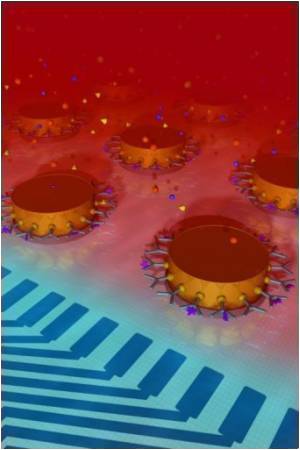
"Imaging tumor angiogenesis is important in early detection, tumor stratification and post-therapy assessment of antiangiogenic drugs. Current clinical modality for angiogenesis imaging utilizes dynamic contrast enhancement MRI by small molecular contrast agents. The method is based on the measurement of permeability of the contrast probes in well-established solid tumors and is not very specific to detect the early on-set of vessel formation. The dual functional nanoprobes aim to image angiogenesis-specific tumor markers that are overly expressed in the tumor vasculature during the early phase of angiogenesis," said Gao.
Together, the research team relied on nanotechnology and established super paramagnetic micellar nanoprobes (50-70 nm in diameter) with greatly improved MRI sensitivity over conventional small molecular agents.
The nanoprobe surface was functionalized with integrins that are a cyclic peptide that can specifically bind to overexpressed on the tumor endothelial cells.
The nanoprobes also had a fluorescent moiety used for the validation of targeted delivery to the tumor endothelial cells.
Studies in cancer cells validated the increased uptake of nanoprobes compared to non-targeted-nanoparticles.
Advertisement
"Conventional image analysis of angiogenesis relies on the evaluation of 'hot spot' densities in 2D images. The 3D high resolution method allowed for the connection of the isolated 'hot spots' in 2D slices into 3D network structures, which greatly improves the accuracy of vessel identification and quantification," said Gao.
Advertisement
Source-ANI













